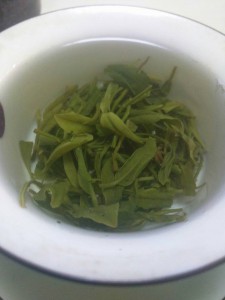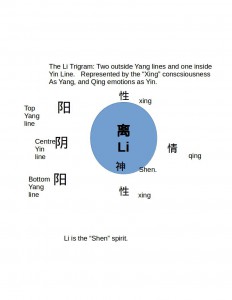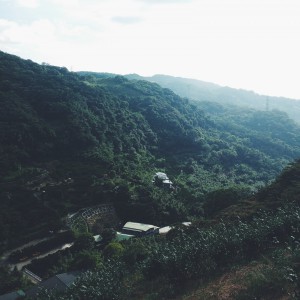
Chinese tea can seem very daunting at first.
There are many different kinds and seemingly infinite gradations of quality for each tea.
This next series of blogs seeks to help explain the pricing of Chinese tea at wholesale market prices and how it affects the teas you purchase in store or online, as well as the end quality of tea you receive.
This series of threads will start with green tea!
Green tea in China is split into many different categories, but typically there are several types of popular leaf shape which are repeated across the various available teas,
for instance:
flat leaf green tea: typically represented by Dragon Well, Mellon Seed, and Mao Feng,
These teas vary in length, but are typically medium sized, flat, and stiff before brewing.
Tipped Green Tea: tips come in many forms and typically they are endemic of first harvest high end green teas. Any tea can be made as tips and long jing, mao feng, and mao jian tips often sell for very high prices, or are sold very quickly to business people and government officers. Many tipped teas become available on the regular market every year, but they are often not sold outside of China, simply due to reasons of pricing and practicality.
Wire form green teas: green teas in the shape of wire are often simply longer versions of famous tip teas such as Mao Jian. They come in many different qualities and usually the shorter they are, they better they are. Very long wire shaped teas longer than an inch are typically more acidic than shorter ones.
“Jian” style tips: Jian style tips are the very short tips, mainly made of wire shaped tea leaves, but also applied to dragon well and other green teas. They are typically considered to be the highest quality of green tea.
Rolled green tea: teas such as bi luo chun which are rolled into a loose coil form.
Large form green tea: These teas really only fit into the classes of Tai Ping Hou Kui and Taiwanese green tea. Hou Kui is the only one of the two which can be truly considered to be green tea, since Taiwan green tea is often made with oolong leaves. Hou Kui is considered to be very high quality, but there are many fakes on the market.
Now lets talk about prices of green tea at wholesale and how the effect you as the overseas buyer:
Green tea at wholesale starts at very low prices and goes to very high prices. Prices are determined by terroir, leaf picking quality, size of leaf, freshness of leaf, taste, shape, completeness of leaf and many other things.
Typically, any tea grown in its most famous geographical region (for instance, long jing tea grown in hangzhou) is more expensive than tea grown in less famous regions (long jing grown in fujian province for instance). This means that prices accord to this principle and if you want to purchase source genuine tea, it usually costs considerably more money than buying outsourced teas. This is easier for less popular teas such as mao feng, but very difficult for teas such as long jing, bi luo chun, and hou kui. since there are so many fakes on the market, these teas often require special contacts to get a real one.
Here is an approximate top to bottom list for Long Jing tea bought at wholesale in a tea market:
40 RMB/$7 USD – 500g: low end, large leaf, terroir non authentic tea. usually very high in farm chemical residue.
100 RMB/$15 USD – 500 g: large leaf, terroir non authentic, mildly acidic, usually using farm chemicals.
200 – 400 RMB/$30-60 USD – 500 g: medium sized leaf, terroir non authentic, usually tastes sweet and reasonably good, usually using farm chemicals.
500-700 RMB/$75-100 USD: small leaf, terroir non authentic, usually very sweet, farm chemicals typically used.
1000 -1500 RMB/ 500 g: smallest leaves terroir non authentic, using good soil and plucking standard, or medium sized terroir authentic, very sweet, often containing hidden flavours in the aftertaste. Very easy to damage with hot water.
2000 + RMB/500 g: very high end tea, often terroir authentic.
The best teas often sell for up to 10,000 RMB/500 g and are not easy to get unless you have special contacts.
As you can see, green tea prices often vary greatly depending on authenticity and leaf size as well as flavour. Teas can literally cost anywhere from $5/lbs all the way to $2000/lbs.
Most major tea companies in North America and Europe buy their tea at very low prices and in large quantities. Typically, the tea is drinkable, but not good, and often from very dubious factory farms which are poorly regulated.
Family tea shops are also usually no better, although sometimes in larger urban centres it is possible to get high quality tea from specialist tea shops. There are also many online shops that specialize in high end teas, although very few break the $0.5/gram threshold at wholesale, so you are more than likely going to be drinking teas which originally fall into the framework of $10-$100/LB, with better tea shops offering a wide range of qualities in the same tea.
In order to get good green tea, just as with any other tea, you need to shop around, find stores you like, and ask questions, as well as drinking lots of tea. Try not to be satisfied with the teas you have already found and always seek to research more deeply. Maybe you could even plan a trip to some tea fields in China to do research on site, first hand.
Tea knowledge is a process that grows with you and being able to tell the difference between different qualities of tea will help you to better understand tea culture in the long term, meaning you will get more richness and satisfaction from your tea journey 







